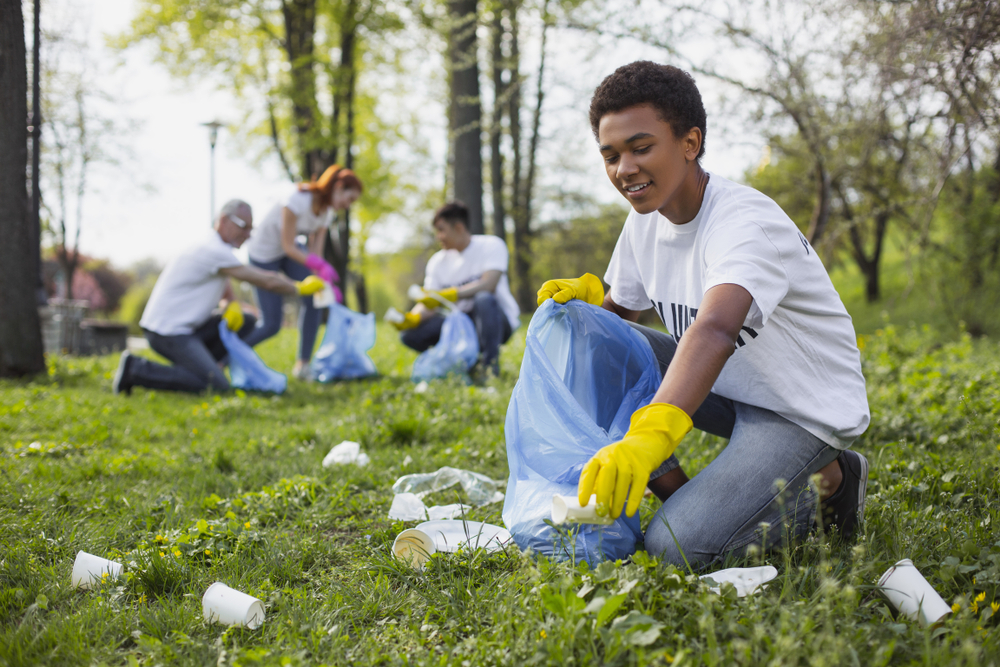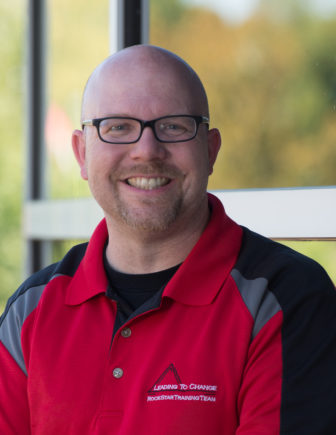
Dmytro Zinkevych/Shutterstock
.
Most folks know of Margaret Mead’s quote: “Never doubt that a small group of thoughtful, committed citizens can change the world …”
It’s a saying that we’ve heard dozens of times. But how many us have actually had an opportunity to see this in action — to observe in real time the power of a collective spark that catches fire?
There’s been a lot of attention to young people responding to the atrocities of gun violence in Texas, Florida, Oklahoma and beyond. They’ve galvanized themselves into using their trauma, pain and anger into a collective of voices that can’t — and shouldn’t — be silenced.

Eric Rowles
But it doesn’t require a senseless tragedy to find young people engaged in community change. Rather, youth power and passion can be seen on a daily basis — if we are willing to look past the headlines and big news stories.
Fortunately, those of us who work daily with young people have the opportunity to witness this act of community transformation through a collaborated action by observing and learning from some of the most unassuming and nontraditional of philanthropists.
They may not be the most financially established donor, or the most resourced or politically connected giver.
But they have insight into how to change their neighborhoods, schools and communities that is unprecedented, undeniable and unbridled.
They’re the experts of addressing the issues facing youth in their communities. They’ve lived firsthand the challenges and obstacles that come during these trying times.
And like Margaret Mead, they believe in the power of change via action. If we listen and look close enough, we just might witness a movement of young people throughout the U.S. that has captured and embodied the idea of philanthropy — to love humanity through giving 3 Ts — their Time, their Talent and allocating community Treasure.
Insights and action
They’re the 14-year-old who scraped together more than $50 to buy stuffed animals to give to terminally sick children in the pediatric ward. It’s the 18-year-old who spent her spring break building houses in Mississippi rather than playing on the beach in Mexico. Or the team of friends who pooled their lawn mowing money to pay for SAT prep classes for their peers who were struggling academically.
Through the process of giving their time, many have also learned how to give their talent by allocating community treasure to make even larger, community-based transformations.
Across the country, young people have been engaged in a grassroots approach to the traditional grantmaking process, in which they raise, promote and distribute community funds back to other youth-serving programs. In 2005, we launched the North Carolina Youth Giving Network. Since that time, 1,200-plus high school-aged students have been engaged in giving more than 70,000 hours of service and granting more than $300,000 in community funds. The work in North Carolina is modeled after programs found throughout the country — from California (www.yli.org), to Indiana (https://ypin.org) to Michigan (https://www.michiganfoundations.org/youth) and beyond.
According to a 2018 report by the Sillerman Center for the Advancement of Philanthropy and data from the Foundation Center’s youthgiving.org, more than 500 youth grantmaking programs throughout the U.S. have made grants to more than 3,100 youth-led community change ideas and allocated more than $12 million in community funds.
But it’s not about the money. Not by a long shot. Rather, the magic behind a youth philanthropy movement is the support systems that are in place for young people to thrive, from OST programs to community foundations, from youth giving circles in places of worship to classroom-based discussions of equity, justice and ways to “pay it forward.”
And even though the grant amounts to youth-funded ideas might be minimal, it’s amazing to watch young people do a lot with so little, such as these examples:
- A culinary-arts training and mentoring program for youth struggling in traditional education
- A student-run “meals on wheels” to deliver food to unemployed and impoverished neighbors
- A youth-facilitated donation store for low-income youth to receive free prom dresses
- A foster-care transition program to provide youth with basic supplies like toothbrushes and combs
- A youth cooking club to fund meals for families staying at a local homeless shelter
- A photo-journal mentoring project capturing experiences of youth immigrants
- A service camp bringing together Girl Scouts and youth with special needs
- A youth-facilitated diversity forum to address stereotypes and cliques in schools.
The work of “philanthropy” is not limited to the large financial donations of a wealthy few. Rather, the purest form of philanthropy is found in the giving of us all — to channel our collective time, talent and treasure.
It’s happening all around us by our most passionate philanthropists — our young people.
Margaret Mead would be quite proud.
Eric Rowles is president of Leading to Change, a national training organization that supports OST programs across the country. Additionally, he founded the North Carolina Youth Giving Network in partnership with the Kellogg Foundation in 2005 and has worked with and trained more than 250 youth philanthropy and nonprofit programs since that time.






























